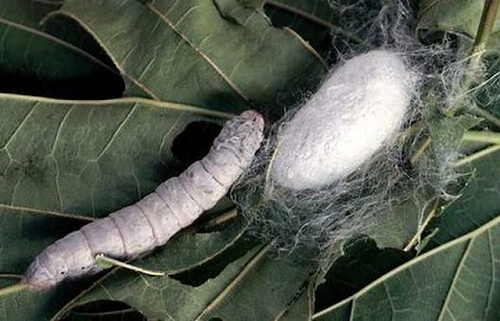Bengaluru (ISJ) – Pebrine, the most dangerous disease of silkworms is identified conventionally by improved mother moth examination (IMME) method, based on brightfield microscopy. This is a manual approach and prone to subjective errors. Further, brightfield microscopy does not provide sufficient contrast to clearly identify the internal structures of the test specimen.
Pebrine had devastated Sericulture in many countries and the conventional method to get rid of it was to burn the crop to further its further spread.
A team of researchers from Indian Institute of Science (IISc), Bengaluru developed a fast, accurate and affordable diagnosis method for this deadly disease, using 3D microscopy and machine learning.
“We generated 3D image of test spore and trained a machine learning algorithm to identify the pebrine spore. The 3D image carries more internal structure information of test spores, as compared to the 2D image. The 3D imaging and machine learning, are synergized to help in accurate identification of pebrine spore, even in the presence of its lookalike Metarhizium anisopliae (MA) spores” Prasobh Kumar, told Indian Science Journal.
Prasobh Kumar explained, the method involves a motorised digital brightfield microscope, custom-made to acquire focused and defocused images of test spores. These images are used to produce quantitative phase images (3D information) of the spores by the transport of intensity equation method. The phase images' histogram of oriented gradients (HOG) feature is used by a machine learning classifier to categorise the spores. This system classified 92 pebrine and 185 MA spores with an accuracy of 97 percent at 0.04 seconds/spore. The duration taken for image acquisition is 2.5 minutes per sample (10 fields of view covering an area of 302 _ 260 μm2). The proposed method shows reliable results in pebrine diagnosis and would be an efficient alternative for current approaches.
In 1870, Louis Pasteur, the progenitor of modern immunology, developed the first pebrine diagnostic method called mother moth examination and saved the collapsing sericulture industry. Pasteur's method involved crushing the mother moths and manually analysing the body fluid using a brightfield microscope for detecting pebrine spores. But, the crushed moths' debris and fat bodies present in the test sample make the pebrine detection labourious.
In 1984, Japanese scientist Tadashi Fujiwara upgraded the mother moth examination method by including sample purification procedures such as centrifugation (which eliminates debris) and post-treatment with KOH (which removes fat bodies). This upgraded approach is known as IMME method.
Even though phase-contrast microscopy (PCM) is recommended in the IMME process, brightfield microscopy is still used in grainages due to the high cost of end-user training needed to operate a new manual method. Sample preparation of this method involves crushing 20 moths together and purifying their body fluids.
The mulberry silkworm is an economically important insect domesticated for silk production. In India, approximately 40 percent silk crop loss is attributed to the various diseases like pebrine (protozoa Microsporidia), flacherie (bacterium), grasserie (virus) and muscardine (fungus). Most of the commercial silkworm species are highly susceptible to these diseases.
Of these, frequent outbreaks of pebrine incidence often leads to low cocoon production. The disease is spread primarily through eggs, i.e., transovarian transmission and secondarily through contaminated rearing appliances, room, litter, leaf, etc. The pebrine disease, till now, has been kept under control within a reasonable limit but not eradicated completely. About 36 percent crop loss is attributed to pebrine disease alone.
The research was done by Prasobh Kumar alongwith Aravind Venukumar from the Department of Instrumentation and Applied Physics of IISc under the mentorship of Prof Sai Siva Gorthi and Prof. C.R. Francis of Maharani’s Science College for Women, Bengaluru.
Image courtesy: Wikimedia Commons


